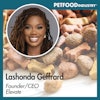
“There’s more to our industry than just the pets.” Chris Mondzelewski, general manager for pet specialty at Mars Petcare North America, opened his headliner session at Petfood Forum 2017 by pointing out the need to look beyond pet needs when innovating. Pet food consumer “wants,” he said, are the true trend drivers, as societal trends continue to dominate their purchasing decisions.
Societal trends driving pet food consumers
Trust and mistrust
“We love to tell consumers about our business,” said Mondzelewski, “but they don’t want to hear from us. They want to hear form people like them.” Sixty percent of consumers, according to Mars, see a person like themselves as “extremely or very credible” when it comes to information. The CEO of a company, on the other hand, is rated as credible by just 37 percent of consumers. The board of directors falls even further down the credibility ladder, at 35 percent. This scale of mistrust “is changing the way consumers interact with the products they buy,” said Mondzelewski.
For pet food, a lot of that mistrust translates to the importance of getting pet food safety information out there. Sixty-five percent of consumers consider product safety before anything else, and the industry has an uphill, though necessary, battle to fight in gaining and maintaining the needed credibility to be the ones pet owners go to for their product safety information.
e-commerce
“The highest percentage of those shopping online are millennials,” said Mondzelewski, and they also happen to be one of the most influential demographics for pet food trends. Pet food e-commerce grew 55 percent in 2015, and in 2016 online dog and cat food sales reached US$1 billion, according to Mars data. Millennials are the top pet owners, due largely to their lifestyles: they’re delaying families and the while picket fence, opting for more urban homes and pets as replacements for the children they’re not ready to settle down and have.
In terms of pet food, millennials’ desires will continue to drive the industry. With their increasing pet ownership and their nuanced market demands, millennial “wants” must be taken into consideration for industry success.
Humanization
Humanization is not a new trend to the pet food industry. “It’s actually occurring with over 90 percent of pet owners,” said Mondzelewski. When consumers think of pets as family, he said, it’s easy to transpose human food trends to pet food. And every year, there are more direct links between those two sets of trends.
First, said Mondzelewski, trends emerge from the human food market, reaching independent pet food brands. Then, independent pet food trends reach critical mass and begin appearing in big box pet superstores. Finally, those trends merge between the two, appearing in premium brands in the larger markets.
Premiumization
All of these other trends lead to the most important of all for current pet food industry growth: premiumization. This trend, which encompasses consumer desire for specialized pet food formulations and the feeling that their pet is being specifically catered to by pet food companies, represents the combination of pet nutrition needs and pet consumer “wants.”
The “wants” behind consumer desires
According to Mondzelewski, consumer desires can tell us about the “wants” consumers have that drive pet food industry trends. Four of the primary wants, he said, are:
- Simplicity: If a human likes it, my pet must, too.
- Seeing is believing: I want my pet’s food to look and smell like “real” food.
- Freshness: Fresh food has more nutrients and flavors.
- True transparency: I know what’s in my pet’s food and how it was made.
“At the end of the day, we have acknowledge the ‘wants’ of our consumers,” said Mondzelewski. And the trends aren’t isolated to the highest-priced brands, in spite of the premiumization movement. They are societal trends, reaching across all demographics and influencing all pet owners.
Petfood Forum 2018
Petfood Forum 2017 was an exclusive event serving pet treat and pet food manufacturers. At Petfood Industry’s 25th anniversary edition of Petfood Forum, attendees learned about the latest in pet food research and marketing from speakers including Randi Zuckerberg and Temple Grandin.
Petfood Forum 2018 will take place at the Kansas City Convention Center in Kansas City, Missouri, USA, on April 23–25, 2018.



















